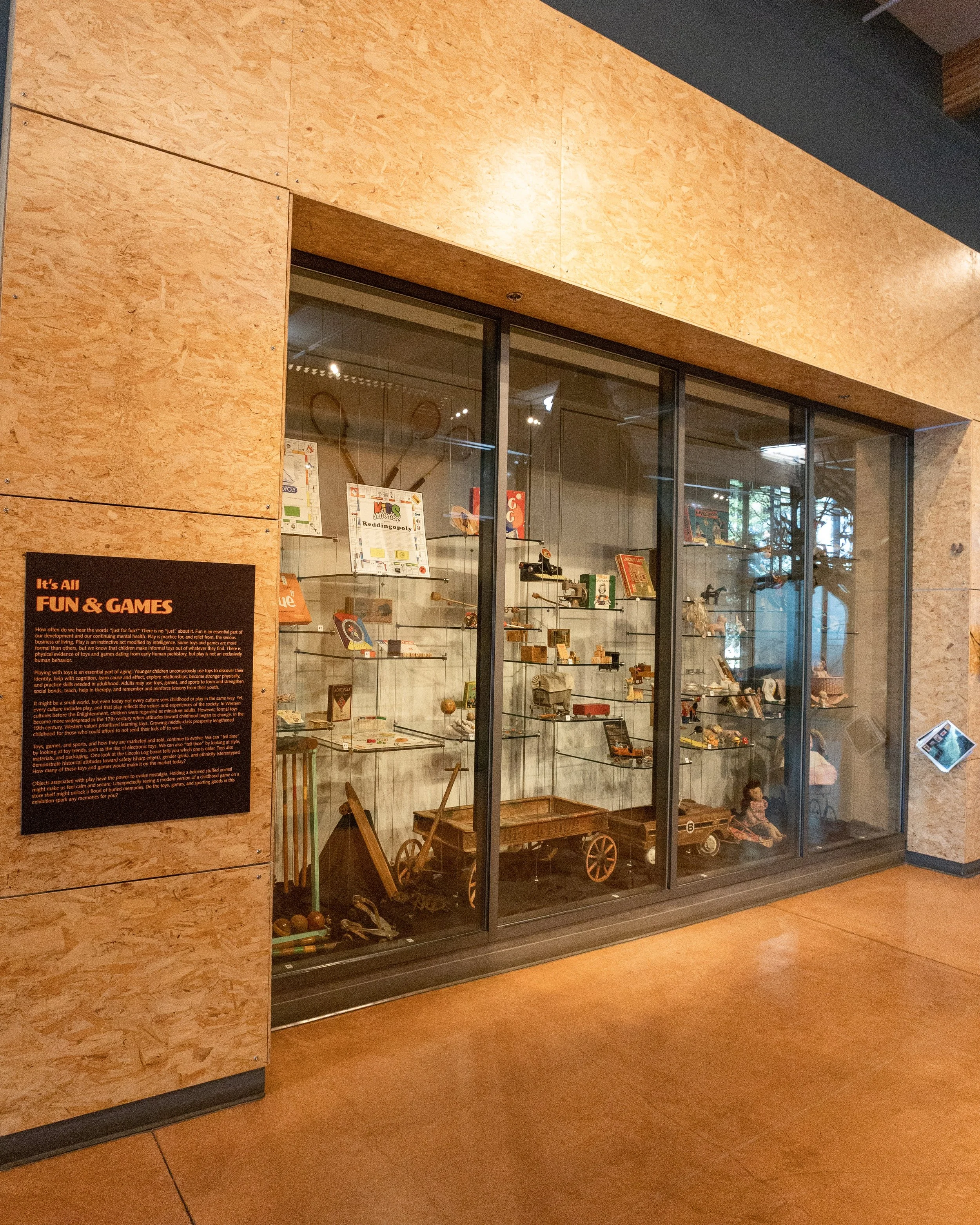Fun & Games Exhibition
Friday, September 30, 2022
How often do we hear the words “just for fun?” There is no “just” about it. Fun is an essential part of our development and our continuing mental health. Play is practice for, and relief from, the serious business of living. Play is an instinctive act modified by intelligence. Some toys and games are more formal than others, but we know that children make informal toys out of whatever they find. There is physical evidence of toys and games dating from early human prehistory, but play is not an exclusively human behavior.
Playing with toys is an essential part of aging. Younger children unconsciously use toys to discover their identity, help with cognition, learn cause and effect, explore relationships, become stronger physically, and practice skills needed in adulthood. Adults may use toys, games, and sports to form and strengthen social bonds, teach, help in therapy, and remember and reinforce lessons from their youth.
It might be a small world, but even today not every culture sees childhood or play in the same way. Yet, every culture includes play, and that play reflects the values and experiences of the society. In Western cultures before the Enlightenment, children were regarded as miniature adults. However, formal toys became more widespread in the 17th century when attitudes toward childhood began to change. In the 19th century, Western values prioritized learning toys. Growing middle-class prosperity lengthened childhood for those who could afford to not send their kids off to work.
Turtle Bay has an extensive collection of toys, games, and sporting equipment mostly dating from the mid 20th century. Many will look familiar to people of all ages, but others are specific to a particular era. These types of objects, and how they are marketed and sold, continue to evolve. We can “tell time” by looking at toy trends, such as the rise of electronic toys. We can also “tell time” by looking at style, materials, and packaging. One look at the Lincoln Log boxes tells you which one is older. Toys also demonstrate historical attitudes toward safety (sharp edges), gender (pink), and ethnicity (stereotypes). How many of these toys and games would make it on the market today?
Objects associated with play have the power to evoke nostalgia. Holding a beloved stuffed animal might make us feel calm and secure. Unexpectedly seeing a modern version of a childhood game on a store shelf might unlock a flood of buried memories. Come visit the exhibition and see if the toys, games, and sporting goods on display spark any memories for you.


